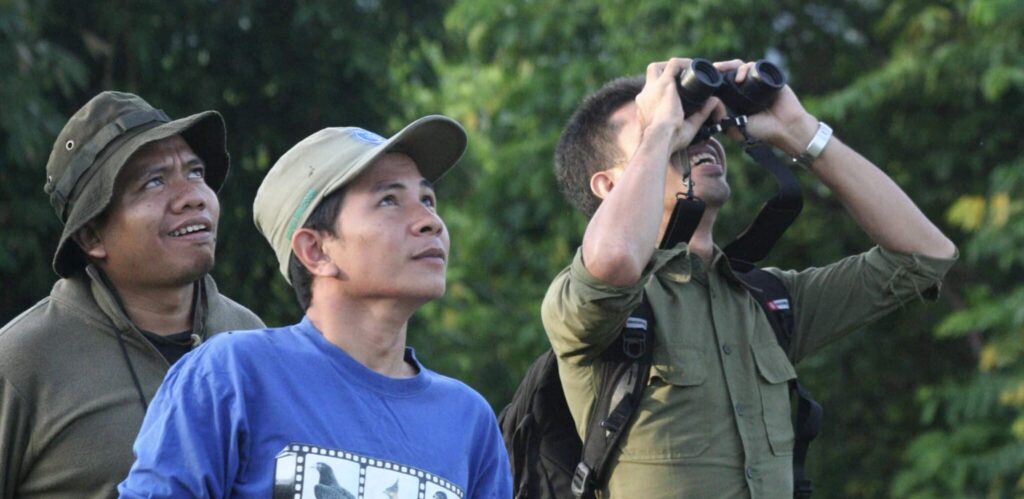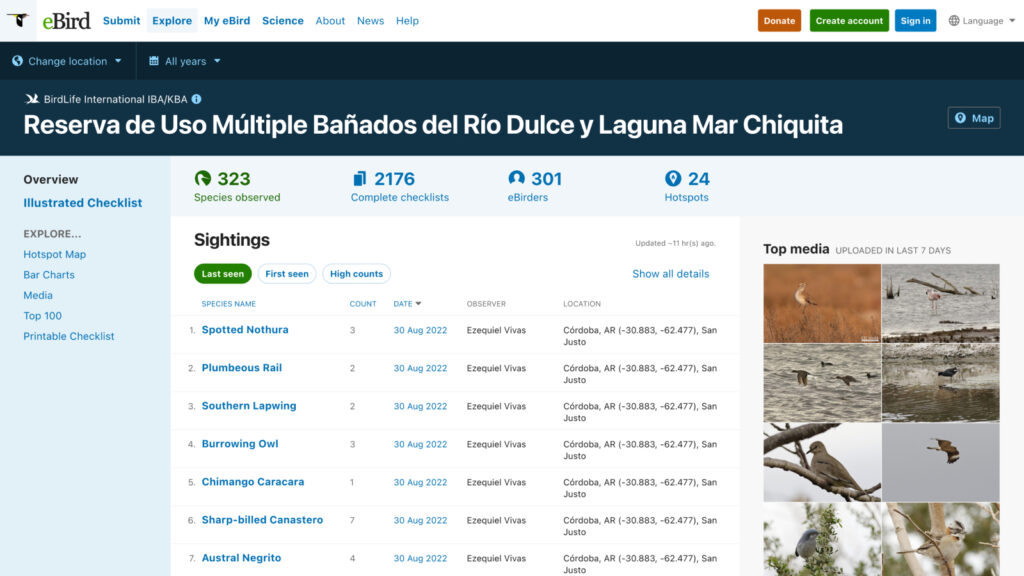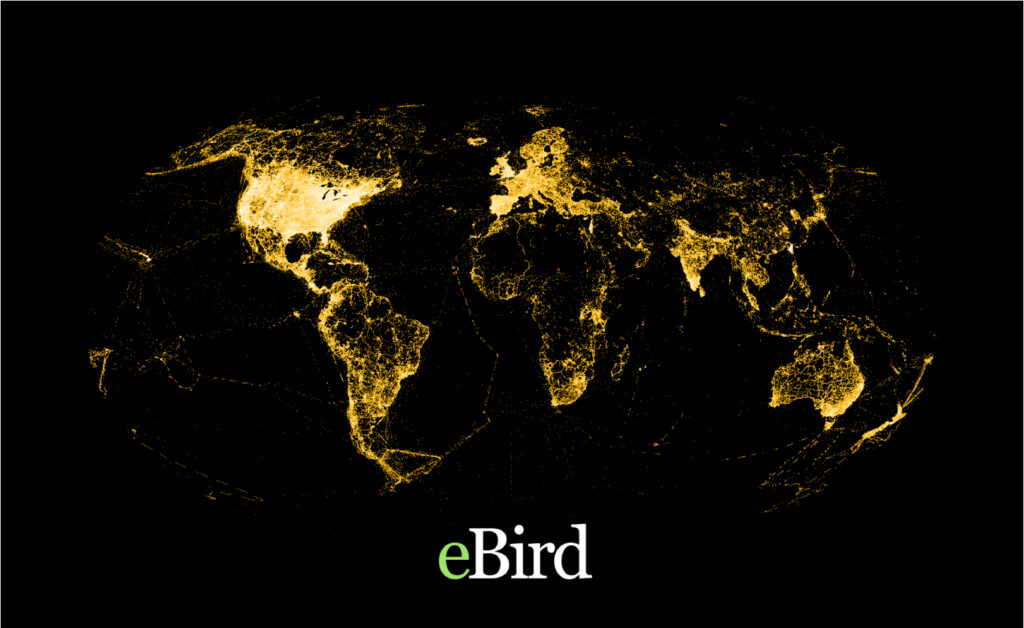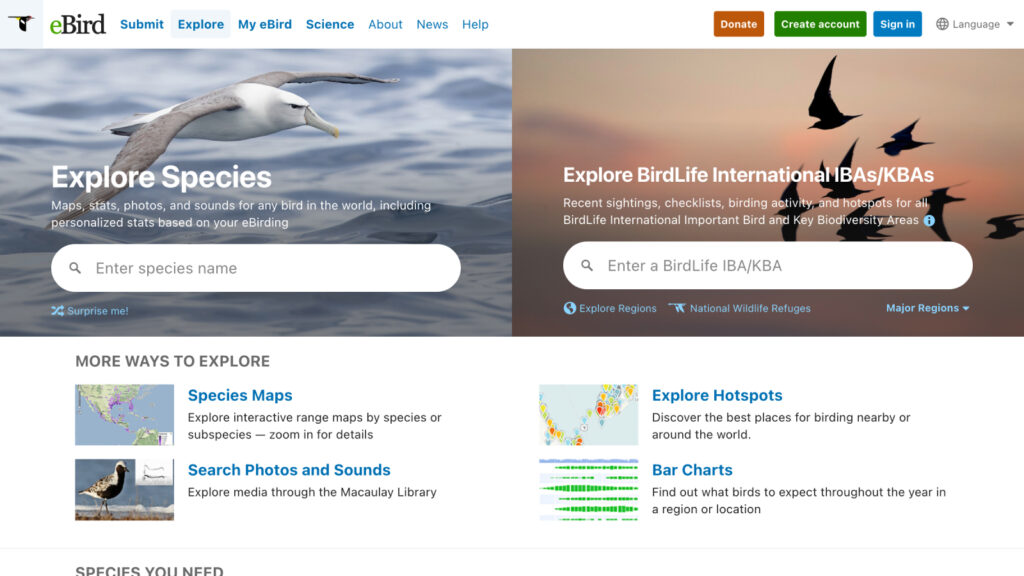How your local birding hotspot could become a new protected area

In a game-changer for conservation, Cornell Lab of Ornithology and BirdLife International join forces to integrate BirdLife Important Bird and Biodiversity Areas (IBAs) and Key Biodiversity Areas (KBAs) into eBird.
The eBird project is one of the largest citizen-science data platforms in the world – with more than one billion records. Birders worldwide use eBird for recording the species they observe, and this vast information repository contributes to our global understanding of species’ distribution, abundance, movements, and population trends. Through a new collaboration with BirdLife, eBird data will be more useful than ever to identify new key sites for nature as well as support the vital conservation efforts of BirdLife Partners.
This week, the Cornell Lab of Ornithology (which manages eBird) and BirdLife launched a new tool that marries the power of eBird with the strength of BirdLife’s network of national partner organisations, as part of a collaboration to monitor and conserve the most important sites for nature. BirdLife has identified over 13,600 Important Bird and Biodiversity Areas (IBAs) worldwide, and these form the core of a wider network of Key Biodiversity Areas (KBAs) – critically important sites for the persistence of global plant and animal diversity. Data on IBAs and KBAs are now integrated into eBird, enabling BirdLife Partners to see key summaries in eBird for each of their country’s IBAs and KBAs, including the species that have been observed, by whom, when and in what numbers. Likewise, eBird users can see when their observations fall within IBAs – their personal contributions to the monitoring of these sites.
By Shaun Hurrell
Header Image: Birdwatchers © Barend Van Gemerden

Filling data gaps with the power of citizen science
Protecting and conserving sites is a vital part of international targets to save nature. One of the key commitments for the Global Biodiversity Framework (to be adopted by the world’s governments at the UN Convention on Biological Diversity’s COP15 in December 2022) is to expand protected and conserved areas to cover 30% of land and seas by 2030, especially ‘areas of particular importance for biodiversity.’ KBAs are the most comprehensive, systematically identified network of such sites worldwide and will be crucial in focusing protected area expansion on the most important locations, and to achieving the targets in the framework. However, gaps in the network remain, many site assessments need updating, and all need effective monitoring.
Data provided by eBird’s more than 800,000 users can help fill these gaps. These data are also updated in real time, so accurate, current assessments can be made of the state of populations of key species in these important sites and how they change over time.
“The eBird data can be used to help pinpoint new sites that qualify as IBAs and KBAs,” said Dr Stuart Butchart, Chief Scientist at BirdLife International, “by highlighting locations outside the existing network that support globally significant populations of species of conservation concern. They can also help monitor the populations of such species in these sites over time, for example, by tracking the proportion of birders’ checklists reporting a particular species at a particular location.”

“The eBird data can be used to help pinpoint new sites that qualify as IBAs and KBAs, by highlighting locations outside the existing network that support globally significant populations of species of conservation concern.”Dr Stuart Butchart, Chief Scientist at BirdLife International
Birders play an important role
Local birders can provide vital information on species such as the timing of arrival from migration to track climate change impacts, or provide population estimates for key species to inform the effective management of a site. The growth of an international community of people supporting nature conservation is a shared goal of both the Cornell Lab of Ornithology and BirdLife. The number of people contributing bird observations to eBird grows by approximately 20% each year, thanks in part to Cornell’s Merlin Bird ID app, a bird-identification tool that utilises cutting-edge technology to help users identify the species they see and hear, and to engage people in the joy of birds.
The ever-growing dataset of observations generated by these users can be used by BirdLife Partners to identify, update, and monitor IBAs. This then can inform BirdLife’s advocacy work and highlight to governments particular sites in need of protection. Data from eBird can therefore be used to help to designate new or expanded protected areas, to recognise community-managed reserves or other conserved areas, and to ensure these are managed effectively, thereby helping governments to meet their 2030 commitments to save nature.
So next time you log an observation on eBird, you should feel proud that you’re contributing a vital data point to help us understand our world – potentially supporting the case for a new protected area, helping to ensure that existing protected areas are effectively managed, or supporting the growth of the global birding community. Thank you.

Future directions
BirdLife and Cornell are now exploring further collaborations and greater integration of their datasets, with the aim of strengthening this network of critical IBAs and KBAs and supporting bird community and conservation globally.
More information
You can explore the new tool here:
www.ebird.org/explore/birdlife
More information on IBAs:
www.birdlife.org/projects/ibas-mapping-most-important-places
Explore the global database of KBAs and find your local KBA using the map tool: